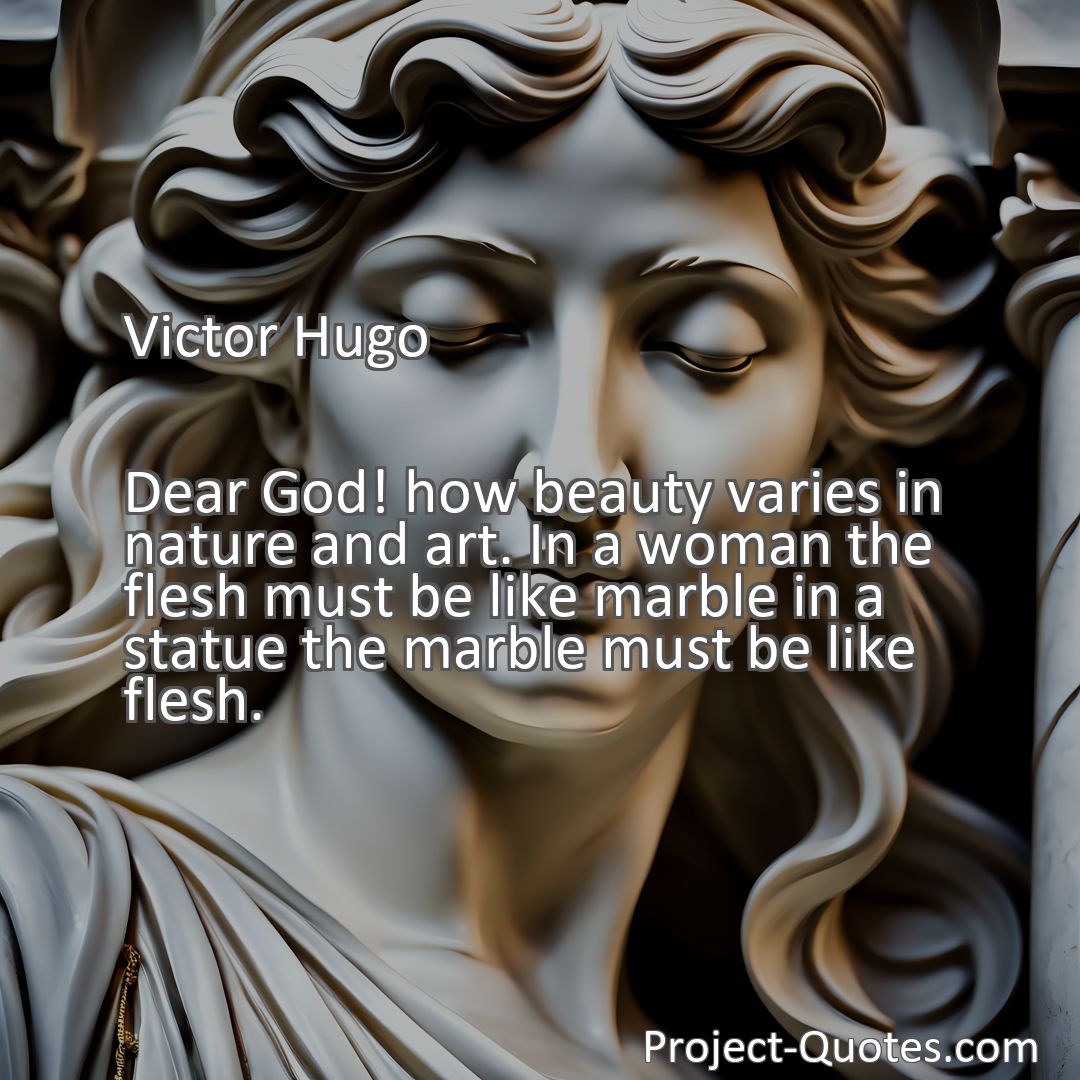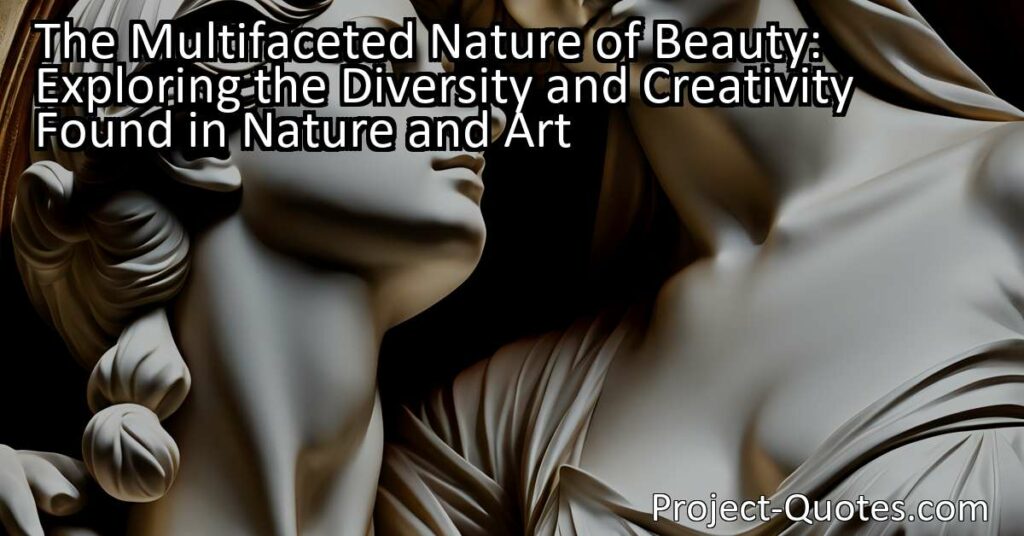Dear God! how beauty varies in nature and art. In a woman the flesh must be like marble in a statue the marble must be like flesh.
Victor Hugo
One person finds beauty may differ from what another person finds beautiful, highlighting the subjective and ever-evolving nature of beauty. Whether it is in the flawless features of a person or the unique qualities of a work of art, the diversity and creativity of beauty continue to captivate us.
Table of Contents
- 1 Dear God! how beauty varies in nature and art. In a woman the flesh must be like marble in a statue the marble must be like flesh.
- 2 Victor Hugo
- 3 Meaning of Quote – Dear God! how beauty varies in nature and art. In a woman the flesh must be like marble in a statue the marble must be like flesh.
- 4 Freely Shareable Quote Image
- 5 Related
Meaning of Quote – Dear God! how beauty varies in nature and art. In a woman the flesh must be like marble in a statue the marble must be like flesh.
Dear God! How beauty varies in nature and art. These words, penned by the renowned author Victor Hugo, serve as a testament to the incredible diversity and splendor that can be found not only in the natural world but also in the works of art created by human hands.
When we contemplate the concept of beauty, our thoughts often gravitate towards the physical attributes of a person, particularly women. Victor Hugo, in his eloquent manner, draws our attention to the ideal portrayal of beauty – one where the flesh of a woman resembles the flawless and timeless beauty of marble in a statue, and conversely, where the stone of a statue takes on the lifelike qualities of flesh. In these simple words, Hugo encapsulates the profound connection between nature, art, and the perception of beauty.
The reference to marble, a material that has been prized and admired for centuries, highlights the importance of purity and perfection in the portrayal of beauty. Marble, with its smooth and unblemished surface, has been used in sculpture since ancient times to create lifelike representations of human form. Just as a sculptor carefully chisels away at a block of marble to reveal an exquisite statue within, so too must a woman’s flesh be flawless and radiant to achieve the ideal standard of beauty.
However, Hugo’s quote is not limited to the portrayal of beauty in women alone. The comparison to statues made of marble invites us to consider the broader realm of art and the power of the artist to capture the essence of life. A skilled sculptor possesses the ability to breathe life into a rigid block of stone, shaping it and imbuing it with vitality and grace. It is this remarkable skill that allows for the creation of statues that resemble human beings so closely that they seem almost alive.
In art, particularly in sculpture, the depiction of human form has always been a prominent theme. Through the careful manipulation of materials, artists seek to portray not just the physical aspects of their subjects but also their inner essence, their emotions, and their stories. The challenge lies in capturing the fleeting beauty of human existence and distilling it into an enduring and tangible form.
The comparison between the beauty found in nature and that found in art highlights the fascinating interplay between the two. Nature, with its boundless creativity, serves as a source of inspiration for artists across all mediums. The diverse landscapes and intricate details found in the natural world provide an endless array of subject matter for painters, sculptors, and poets alike.
Yet, in their pursuit of beauty, artists often strive to surpass nature itself. They seek to immortalize the fleeting moments of beauty that nature offers, to distill them into enduring works that can be admired and appreciated for generations to come. In doing so, they elevate nature’s beauty to new heights, paying homage to its magnificence while imbuing their creations with a touch of human artistry.
The idea that beauty varies in nature and art also serves as a reminder that beauty is not a fixed or static concept but rather one that is ever-evolving and subjective. Each individual perceives beauty through their own unique lens, influenced by personal experiences, cultural backgrounds, and societal ideals. What one person finds beautiful may not resonate with another, and this diversity of perspectives adds depth and richness to our understanding and appreciation of beauty.
Moreover, Hugo’s quote challenges us to broaden our perception of beauty beyond the confines of conventional ideals. It urges us to see beauty not just in the flawless features of a person or the meticulously crafted forms of art but also in the imperfections, the asymmetry, and the idiosyncrasies that make each person and each work of art truly unique.
In conclusion, Victor Hugo’s quote encapsulates the multifaceted nature of beauty found in both the natural world and the realm of art. It invites us to contemplate the intricate interplay between these two realms and to expand our perception of beauty beyond the conventional notions. Whether we find beauty in the flawless flesh of a woman or in the lifelike qualities of a statue, it is the diversity, creativity, and ever-evolving nature of beauty that continues to captivate our hearts and minds.
I hope this quote inspired image brings you hope and peace. Share it with someone who needs it today!


